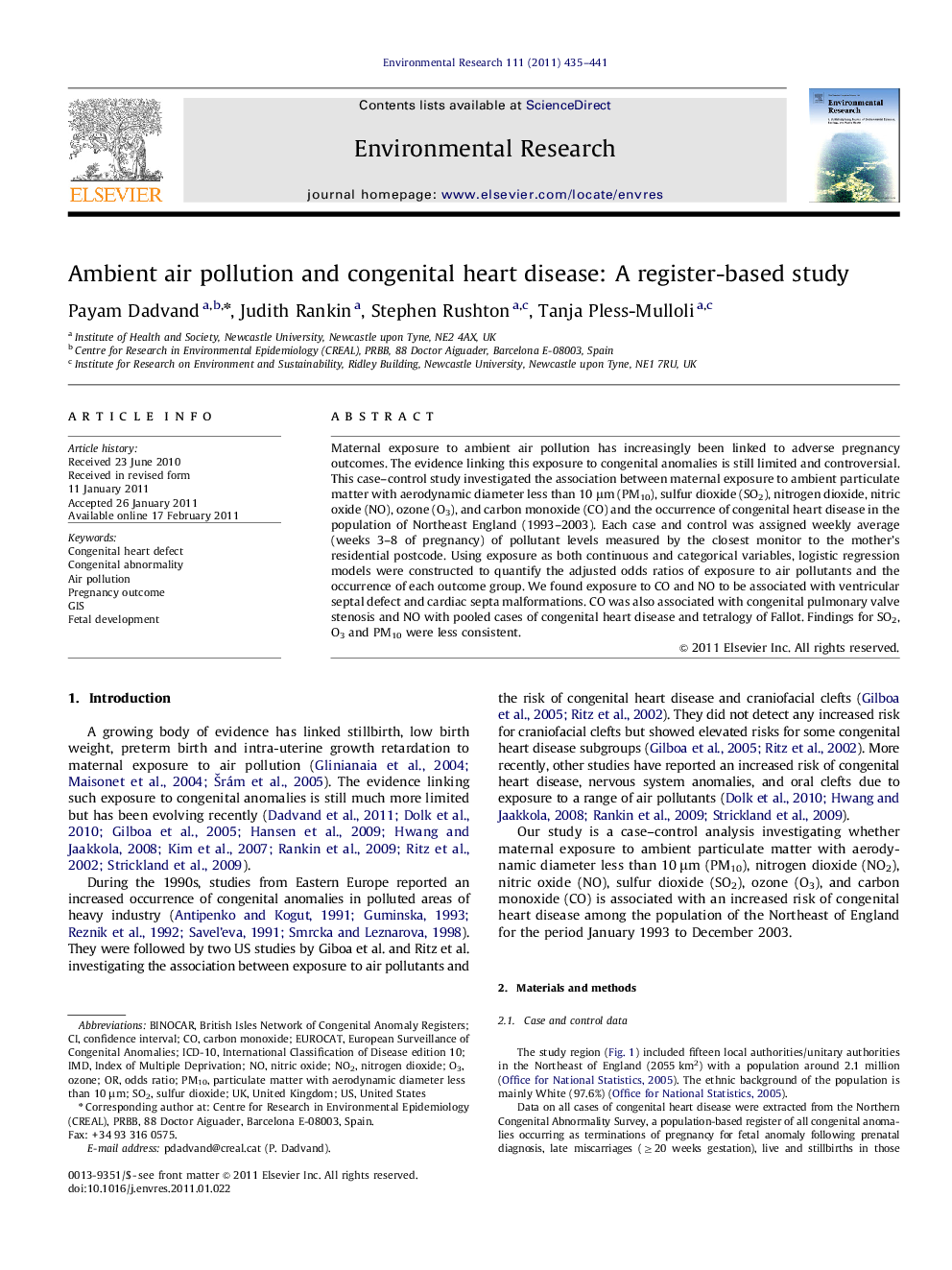| Article ID | Journal | Published Year | Pages | File Type |
|---|---|---|---|---|
| 4470061 | Environmental Research | 2011 | 7 Pages |
Maternal exposure to ambient air pollution has increasingly been linked to adverse pregnancy outcomes. The evidence linking this exposure to congenital anomalies is still limited and controversial. This case–control study investigated the association between maternal exposure to ambient particulate matter with aerodynamic diameter less than 10 μm (PM10), sulfur dioxide (SO2), nitrogen dioxide, nitric oxide (NO), ozone (O3), and carbon monoxide (CO) and the occurrence of congenital heart disease in the population of Northeast England (1993–2003). Each case and control was assigned weekly average (weeks 3–8 of pregnancy) of pollutant levels measured by the closest monitor to the mother’s residential postcode. Using exposure as both continuous and categorical variables, logistic regression models were constructed to quantify the adjusted odds ratios of exposure to air pollutants and the occurrence of each outcome group. We found exposure to CO and NO to be associated with ventricular septal defect and cardiac septa malformations. CO was also associated with congenital pulmonary valve stenosis and NO with pooled cases of congenital heart disease and tetralogy of Fallot. Findings for SO2, O3 and PM10 were less consistent.
Research highlights► Available studies linking air pollution and congenital anomalies are limited. ► A case–control study of the link between air pollution and congenital heart disease. ► Carbon monoxide is associated with increased risk of congenital heart disease. ► Nitric oxide is associated with increased risk of congenital heart disease.
